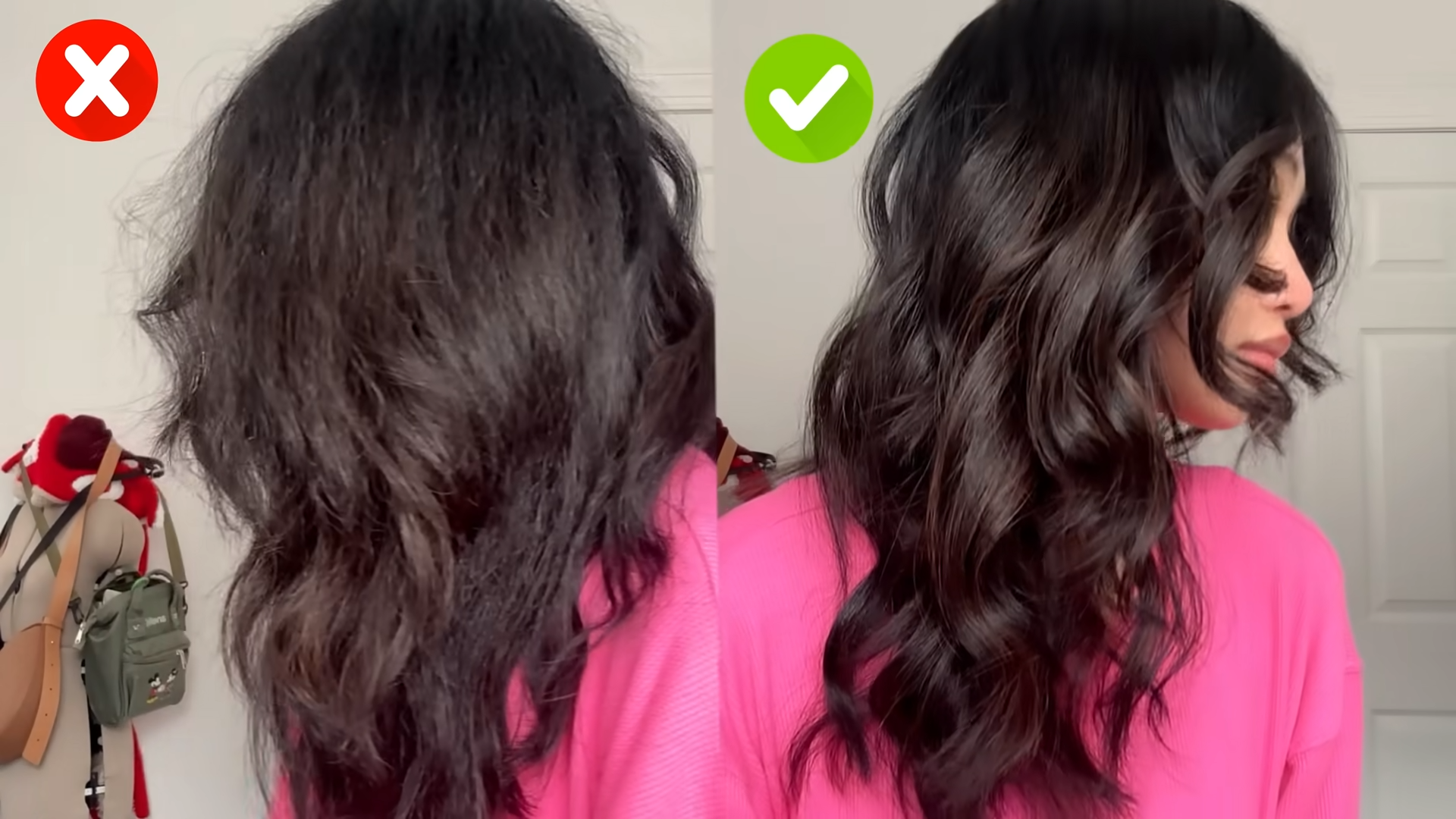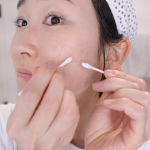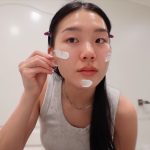Dealing with frizzy hair can be frustrating, but understanding its root causes is the first step towards effective management. Frizz often occurs when hair lacks moisture or when the outer layer of the hair strand, known as the cuticle, becomes raised and allows moisture to pass through, causing swelling and frizz. Environmental factors like humidity and heat can exacerbate this condition, making hair prone to unruly and flyaway strands.
Managing frizzy hair involves adopting the right techniques and products that help maintain moisture balance and smoothness. Hydrating shampoos and conditioners designed for frizz control can provide essential moisture without weighing hair down. Additionally, using a wide-tooth comb or a microfiber towel to gently dry hair can prevent friction and minimize frizz. Styling products such as anti-frizz serums or creams can further tame unruly hair by sealing the cuticle and providing a smooth finish.
Beyond products and techniques, opting for hairstyles that complement your hair’s natural texture can also help manage frizz effectively. For instance, hairstyles like braids, buns, or loose waves can minimize exposure to humidity and reduce frizz formation. Avoiding excessive heat styling and opting for heat protectant sprays when using hot tools can also protect hair from damage and reduce frizz over time. By combining these strategies, you can achieve smoother, more manageable hair despite challenging weather conditions or inherent hair texture.
Understanding the causes of frizzy hair and adopting effective techniques are crucial for maintaining smooth and manageable hair. Below are three key strategies to help you combat frizz and achieve healthier hair:
Moisture Balance and Hydration
Maintaining moisture balance is essential in combating frizzy hair. Hydrating shampoos and conditioners formulated for frizz control replenish essential moisture without weighing down your hair. Using a wide-tooth comb or a microfiber towel to gently dry your hair minimizes friction, reducing the likelihood of frizz. Additionally, incorporating anti-frizz serums or creams can seal the hair cuticle, resulting in a smoother and more polished appearance.
Importance of Moisture Balance Achieving and maintaining moisture balance is crucial for managing frizzy hair. When your hair lacks adequate moisture, it becomes prone to frizz as the cuticle opens up, allowing moisture to penetrate and swell the hair shaft. This leads to unruly and flyaway strands, especially in humid conditions. By ensuring your hair stays adequately hydrated, you can prevent these issues and maintain smoother, more manageable hair.
Hydrating Shampoos and Conditioners Using hydrating shampoos and conditioners specifically formulated for frizz control is key. These products are designed to infuse moisture into the hair shaft without adding excess weight that could flatten your hair. Look for ingredients like glycerin, argan oil, or shea butter, which help retain moisture and provide a protective barrier against humidity. Regular use of these products can significantly improve the texture and appearance of frizzy hair.
Gentle Drying Techniques How you dry your hair also impacts its susceptibility to frizz. Opting for a wide-tooth comb or a microfiber towel to gently blot or pat dry your hair minimizes friction that can exacerbate frizz. Avoid rubbing your hair vigorously with a regular towel, as this can roughen the cuticle and cause more frizz. By adopting gentler drying methods, you preserve the integrity of your hair strands and reduce frizz effectively.
Sealing the Cuticle with Anti-Frizz Products To further enhance moisture retention and smoothness, incorporate anti-frizz serums or creams into your hair care routine. These products work by sealing the hair cuticle, which helps to flatten the outer layer and prevent moisture from penetrating and causing frizz. They also provide a sleek finish and enhance shine, making your hair appear healthier and more polished. Apply these products sparingly to avoid weighing down your hair while still reaping their frizz-fighting benefits.
Optimal Hairstyles for Frizz Control
Choosing hairstyles that complement your natural hair texture plays a significant role in managing frizz. Styles such as braids, buns, or loose waves can help minimize exposure to humidity and prevent frizz formation. It’s also beneficial to avoid excessive heat styling and to use heat protectant sprays when using hot tools. These practices not only protect your hair from damage but also contribute to long-term frizz reduction.
Choosing Hair Styles that Suit Your Hair Texture Selecting hairstyles that work well with your natural hair texture is essential for minimizing frizz. For example, opting for braids, buns, or loose waves helps to reduce the amount of surface area exposed to humid air, which can cause frizz. These styles also help maintain the shape of your hair longer, reducing the need for restyling and minimizing frizz throughout the day.
Avoiding Excessive Heat Styling Excessive heat styling can contribute to frizz by drying out your hair and disrupting its natural moisture balance. To prevent this, it’s advisable to limit the use of heat tools like straighteners or curling irons. When heat styling is necessary, always use a heat protectant spray beforehand. This product forms a barrier that shields your hair from heat damage and helps maintain its smoothness and manageability.
Benefits of Protective Hairstyles Protective hairstyles such as braids not only reduce exposure to humidity but also protect your hair from environmental elements that can contribute to frizz. By keeping your hair neatly styled and tucked away, these hairstyles minimize friction and prevent your hair from becoming tangled, which can exacerbate frizz. Additionally, they promote healthy hair growth by reducing the need for daily manipulation and styling.
Long-term Frizz Reduction Strategies Incorporating these practices into your hairstyling routine contributes to long-term frizz reduction. By choosing hairstyles that promote hair health and using protective measures like heat protectants, you can maintain smoother, more manageable hair over time. These strategies not only improve the appearance of your hair but also support its overall health and resilience against environmental factors that cause frizz.
Combining Strategies for Effective Management
By integrating these strategies—maintaining moisture balance, choosing appropriate hairstyles, and minimizing heat damage—you can effectively manage frizzy hair. Whether dealing with challenging weather conditions or working with your hair’s inherent texture, these approaches ensure smoother, more manageable hair that looks and feels healthy.
Whether dealing with challenging weather conditions or working with your hair’s inherent texture, these approaches ensure smoother, more manageable hair that looks and feels healthy.
Maintaining Moisture Balance Ensuring your hair receives adequate hydration through regular conditioning and moisturizing treatments prevents frizz caused by dryness. Use leave-in conditioners or natural oils like argan or coconut to lock in moisture without weighing hair down.
Choosing Appropriate Hairstyles Opt for hairstyles that complement your hair type and minimize frizz. Styles like braids, twists, or buns can help control frizz by keeping hair secure and protected from environmental factors.
Minimizing Heat Damage Reduce the use of heat styling tools and always apply a heat protectant before styling. Air-drying or using low-heat settings on styling tools can prevent damage that exacerbates frizz, maintaining hair health and smoothness.
Dealing with Challenging Weather Conditions Adjust your hair care routine based on weather conditions. Use anti-humidity products or protective styles during humid weather to prevent frizz, ensuring your efforts to manage frizzy hair are effective year-round.
Conclusion: Managing Frizzy Hair
Dealing with frizzy hair can be frustrating, but understanding its root causes is the first step towards effective management. Frizz often occurs due to insufficient moisture or raised cuticles allowing moisture to penetrate, leading to swelling and unruly strands exacerbated by humidity and heat. To combat frizz, adopt techniques such as using hydrating shampoos and conditioners, employing gentle drying methods with wide-tooth combs or microfiber towels, and integrating anti-frizz products like serums or creams to seal the cuticle. Choosing hairstyles that suit your hair’s natural texture and minimizing heat styling further contribute to maintaining smooth, manageable hair despite challenging conditions. By combining these strategies, you can achieve healthier, more resilient hair with reduced frizz.








